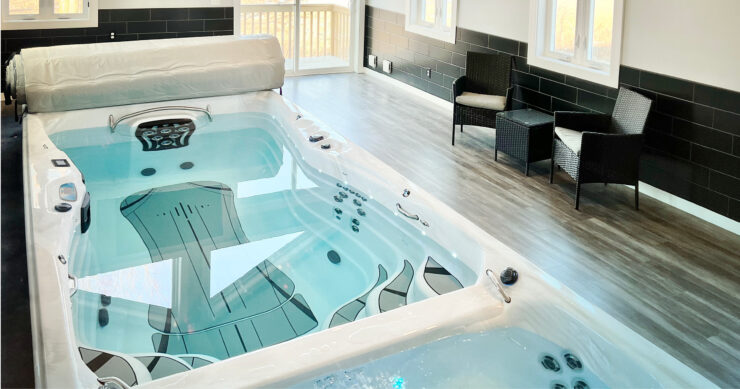You’ve been living with osteoarthritis for years, and the chronic knee pain has taken a toll on your mood, sleep, and overall quality of life. Activities you once enjoyed seem like distant memories, as the constant ache in your knees forces you to say “no” more often than you’d like. It’s a daily battle, and you’ve become all too familiar with the limitations it imposes.
You have been considering your treatment options, including surgery. Still, the thought of undergoing a total knee replacement feels like an overwhelming decision.
But total knee replacement is a common surgery with more than 790,000 individuals having the procedure each year. And 1 in 10 Americans will have a knee replacement before the age of 80. The people who choose to have the procedure frequently report a remarkable enhancement in their overall well-being. They rediscover the ability to move with ease, to partake in activities.
The journey toward full recovery, though, doesn’t end with the surgery. A tailored exercise regimen is a pivotal step on the road to regaining strength and flexibility.
However, some people struggle with swelling and putting weight on their leg after surgery. Water exercise and therapy, though, can be incorporated into a rehab routine to reduce pain and swelling while increasing the function of the joint.
Some facilities make use of warm water pools but an at-home swim spa can help you benefit from aquatic exercise as you recover from total knee replacement surgery.
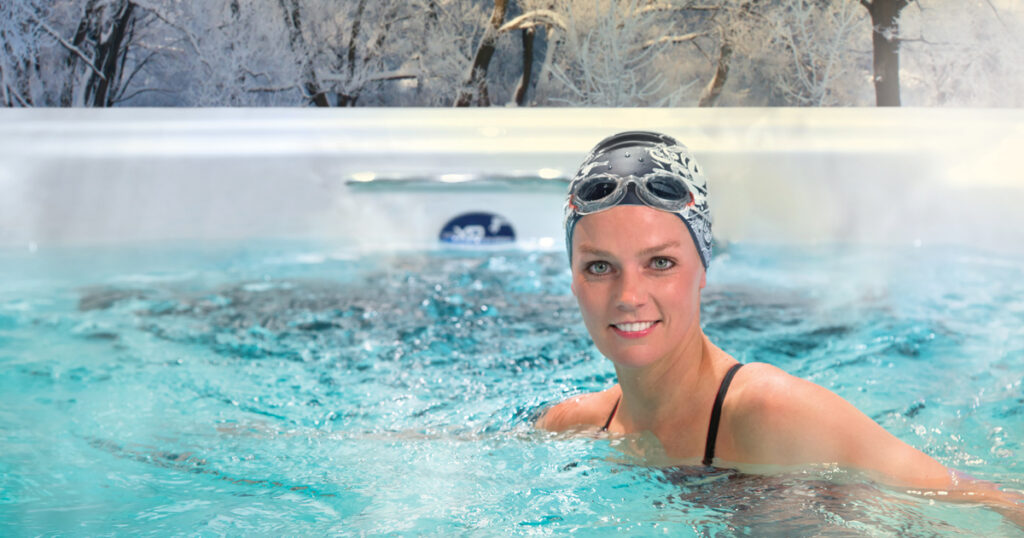
Benefits of aquatic exercise after knee replacement
It can take several months to a year to fully recover and experience the complete benefits of a total knee replacement. And in those early days, you might experience ups and downs. Some days, you really do feel like you have a new joint. Other days, you feel stiff, sore, and weak.
And while it seems counterintuitive, physical therapy and exercise can help you manage the discomfort. Aquatic exercise can be particularly beneficial because the water is a supportive environment. The buoyancy of water reduces the weight-bearing load on the knee, allowing for pain-free movement without undue stress on the joint.
Aquatic exercise after knee surgery offers additional benefits, too.
Cardiovascular health
Water exercise might be low-impact but it can still be a way to improve your overall health and fitness. Whether you are swimming, water walking, or doing water aerobics, the movements get your heart rate up. This helps improve your aerobic capacity, which is the ability of your body to utilize oxygen efficiently during physical activity. In addition, water exercise improves circulation, which can reduce swelling and edema — common after knee surgery.
Increased mobility
Swelling and stiffness around the surgical site and in the joint are common after knee surgery. It might feel difficult to move your knee fully. But exercise and working out in the water can progressively improve joint mobility. The buoyancy of water counteracts the effects of gravity, making it easier to perform exercises that might be challenging on land. This aids in increasing the range of motion and reducing stiffness in the knee joint.
Enhanced muscle strength and endurance
Exercising in the water requires you to use various muscle groups. Even if you are water walking, you are recruiting your legs, core, and arms. Swimming is also a full-body exercise. Water has a natural resistance that can help you build muscular strength, particularly in the quadriceps, hamstrings, and calf muscles. Strengthening these muscles can help stabilize the knee joint and improve the overall function of the joint.
Pain management
It’s normal to experience pain after any surgery. When you have a knee replacement, you should expect some discomfort for the first few months. But the hydrostatic pressure of water has a natural analgesic effect, alleviating pain and reducing swelling in the knee area. This will allow you to perform exercises with greater comfort.
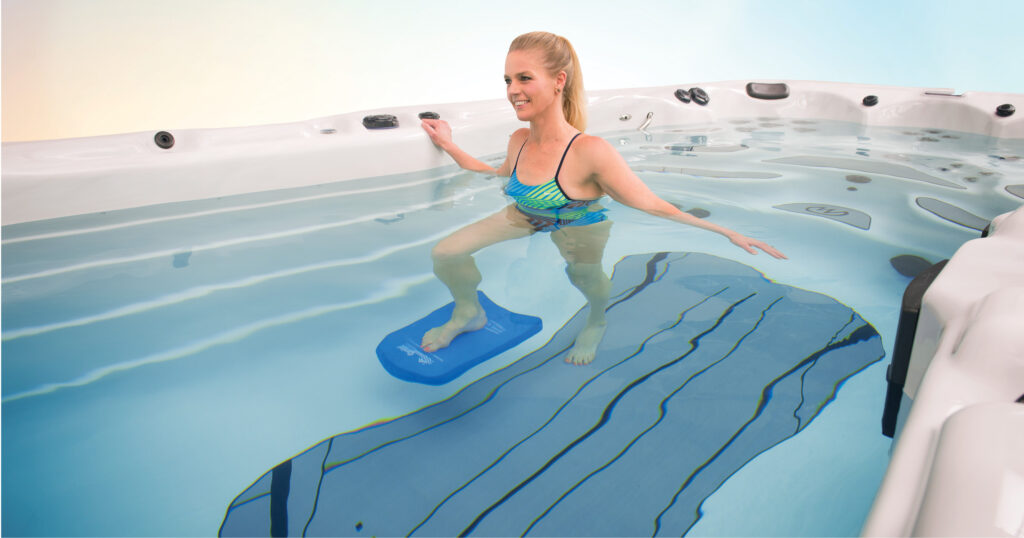
Types of water exercises for post-knee replacement
Medical professionals, including doctors and physical therapists, strongly advocate for exercise after total knee replacement. Exercise can help prevent complications such as blood clots, improve circulation, and enhance overall mood and well-being.
Aquatic exercise is a gentle approach to getting back to daily life after knee surgery. You can incorporate myriad exercises into your rehab routine based on your fitness level and what you enjoy.
Remember, it’s always a good idea to consult with a medical professional before starting any new exercise routine, especially if you have any pre-existing health conditions. They can provide personalized guidance based on your individual needs and capabilities.
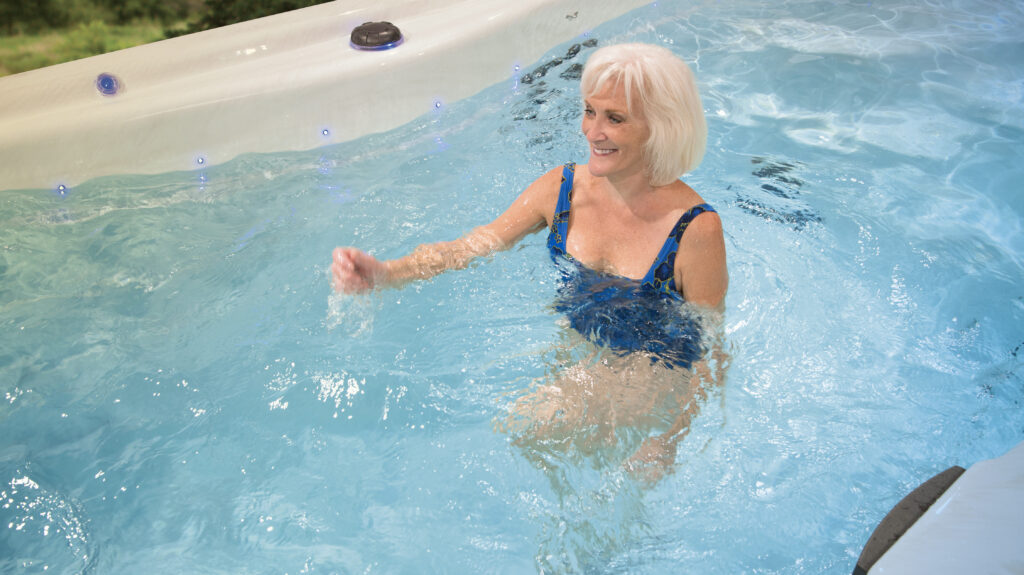
Water walking
Walking in waist-deep water is an excellent way to start exercising in the water. Stand upright with your shoulders back and your core engaged. Keep your gaze forward. Start walking in place, lifting your knees and swinging your arms as you would during regular walking. Focus on keeping your movements controlled and deliberate.
When exercising in a Michael Phelps Signature Swim Spa, you can use the endless pool current to increase the intensity of the workout. You might find that you need little resistance soon after surgery. But as you rebuild your strength, you can adjust the speed of the current. Michael Phelps swim spas have speed settings from zero to 100.
The water depth of the swim spa is over 4 feet, making it ideal to take advantage of water’s natural properties. The buoyancy can reduce the stress on your joints by up to 80 percent depending on your height.
Leg swings
Standing near the side of the swim spa, you can perform controlled leg swings in various directions. This exercise helps improve flexibility and range of motion in the knee.
Michael Phelps swim spas have a non-slip flooring system that provides grip and comfort while you exercise. This system allows you to perform myriad water exercises without the fear of falling or need for water shoes.
Water aerobics
Water aerobics is not just for the community center. You can do water aerobics at home in the convenience and privacy of your backyard with a Michael Phelps swim spa. You can set the temperature of the water to your preference, with the therapeutic range in the low 90s.
Need water workout ideas? The H2Xercise book, which comes with your swim spa. There are myriad exercises, from strength moves to ones that will challenge your cardio fitness.
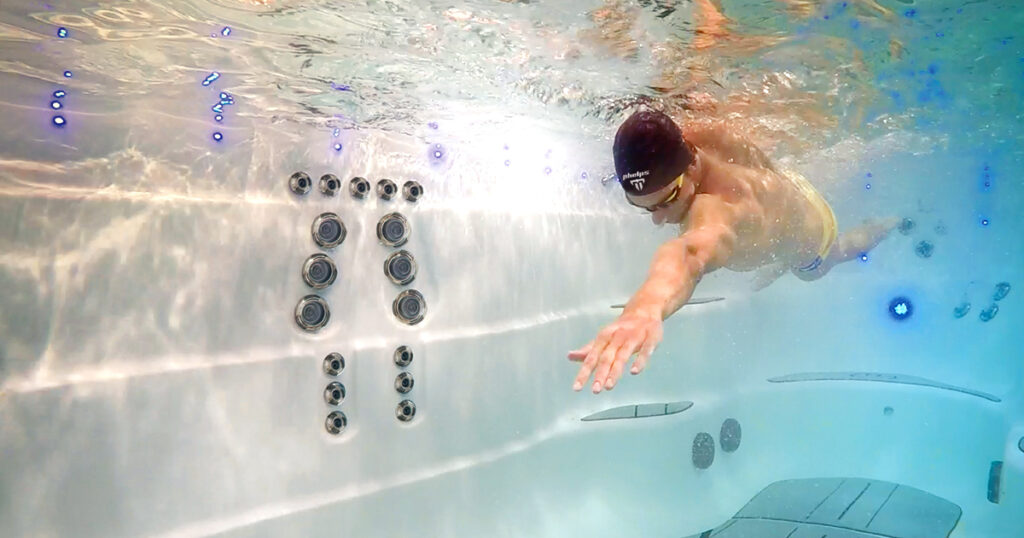
Swimming
According to the American Academy of Orthopaedic Surgeons, swimming is an excellent low-impact activity for people who have had a total knee replacement. Typically, you can begin swimming as soon as the wound is sufficiently healed.
But, it’s important to talk to your doctor about when to begin.
Why is swimming so beneficial? It’s a full-body workout that can improve your heart health, as well as muscle strength and joint flexibility.
But while it’s a good workout, swimming in a Michael Phelps swim spa can feel like a therapeutic experience. You can adjust the pace of the swim system to personalize the intensity level. And, unlike a pool, it’s just you and the water. You can focus on yourself, your form, and what your goals are for recovery.
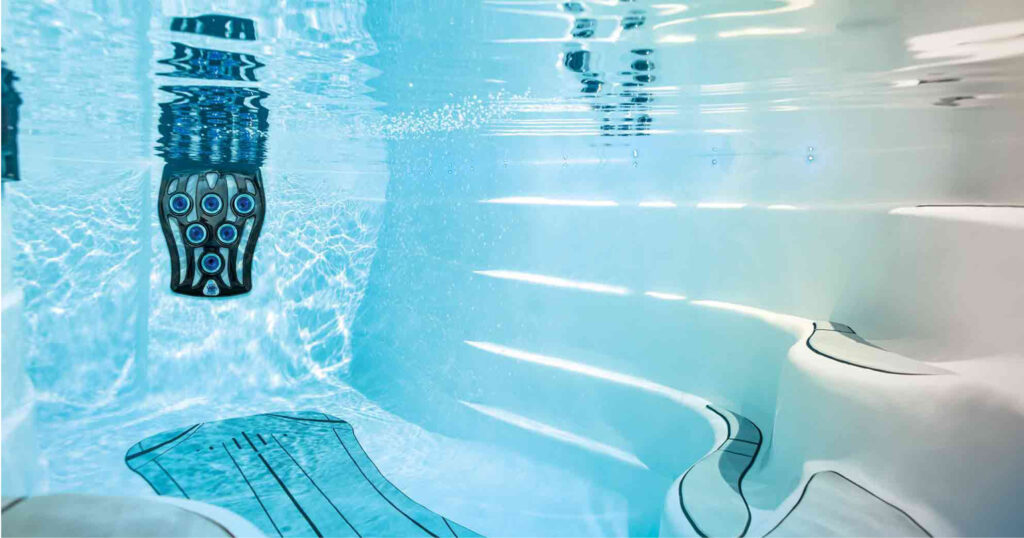
How to buy a Michael Phelps Signature Swim Spa
Do you want to be able to swim, exercise, and relax at home? Having a Michael Phelps Signature Swim Spa allows you to swim on your schedule while adding a fun factor to your backyard. You can click here to find out more about the benefits of hydrotherapy and relaxing in a hot tub. Or, contact your local Master Spas retailer to learn more about swim spa ownership. Wondering how much a swim spa costs? You can request a quote here.

